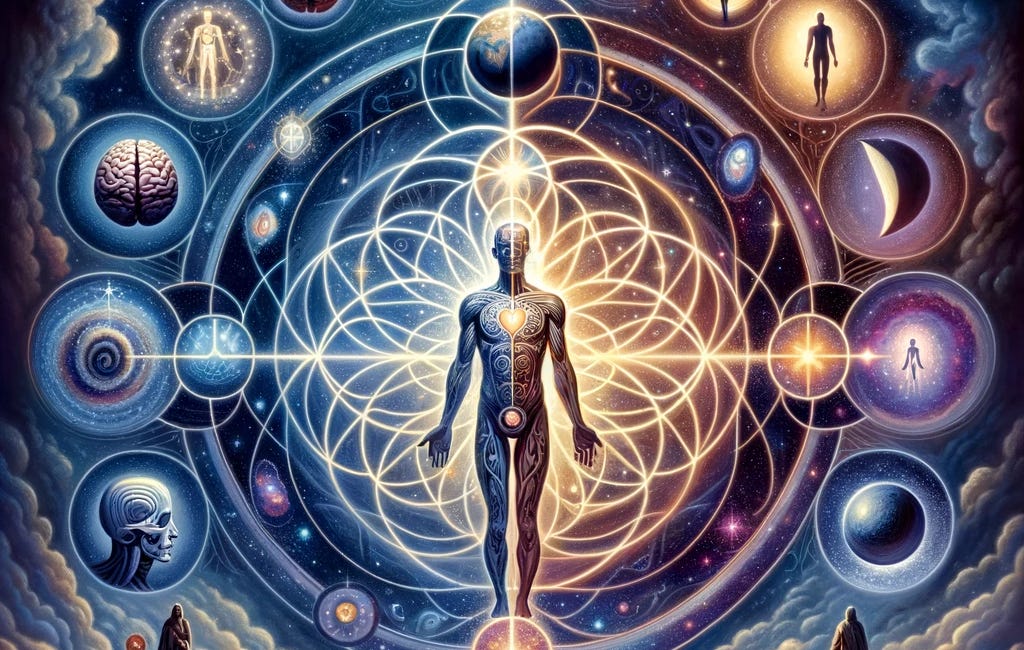The Concept of Evil in the Unified Theory of Duality
In Dr. Theo Mathis's Unified Theory of Duality, evil is understood as an essential aspect of the dual nature of existence. This perspective sees evil not as a separate or isolated force but as a necessary counterbalance to good, contributing to the dynamic equilibrium of the universe. Here’s an exploration of how evil fits within this framework:
1. Dual Nature of Existence
Good and Evil:
Complementary Forces: Good and evil are seen as complementary forces that exist in a dynamic interplay. Just as light and darkness define each other, good and evil are interdependent, each giving context and meaning to the other.
Balance and Harmony: The existence of evil provides the contrast needed to understand and appreciate good. The balance between these forces is crucial for the overall harmony of the universe.
2. Ethical and Moral Duality
Moral Choices:
Free Will: Human beings are endowed with free will, allowing them to choose between good and evil. This capacity for choice is a fundamental aspect of moral duality, emphasizing the responsibility and consequences of human actions.
Learning and Growth: Encounters with evil and the challenges it presents are seen as opportunities for learning and growth. Overcoming evil and making ethical choices contribute to personal and collective development.
3. Evolutionary Perspective
Survival and Adaptation:
Evolutionary Force: In the evolutionary context, what is perceived as evil can drive adaptation and survival. Challenges and adversities often lead to innovation, resilience, and stronger communities.
Catalyst for Change: Evil acts as a catalyst for change, prompting societies to develop laws, norms, and systems that promote justice, fairness, and compassion.
4. Psychological Duality
Inner Conflict:
Shadow Self: Psychologically, evil can be understood as part of the "shadow self," the aspects of an individual’s personality that are repressed or denied. Acknowledging and integrating the shadow self is essential for achieving psychological wholeness.
Conflict and Resolution: Inner conflicts between good and evil impulses are natural parts of the human experience. Resolving these conflicts leads to greater self-awareness and moral integrity.
5. Spiritual Perspective
Growth and Enlightenment:
Spiritual Trials: Spiritual traditions often view encounters with evil as trials or tests that strengthen faith and character. Overcoming evil is part of the journey toward enlightenment and spiritual maturity.
Dual Nature of the Divine: In some spiritual frameworks, the divine encompasses both good and evil, reflecting the duality of creation. This perspective sees the divine as a source of all experiences, both positive and negative, contributing to the ultimate balance.
6. Social and Cultural Duality
Societal Dynamics:
Justice Systems: Societies develop systems of justice to counteract evil and protect individuals. These systems reflect the dual nature of societal dynamics, balancing punitive measures with rehabilitation and forgiveness.
Cultural Narratives: Myths, legends, and stories often explore the battle between good and evil, imparting moral lessons and cultural values. These narratives highlight the dual nature of human experiences and societal evolution.
Summary
In the Unified Theory of Duality, evil is understood as an integral part of the dual nature of existence, providing a necessary counterbalance to good. This perspective emphasizes the interdependence of good and evil, recognizing their complementary roles in defining ethical choices, driving evolutionary progress, and fostering personal and spiritual growth. By understanding evil as part of the dynamic equilibrium of the universe, this theory offers a holistic and balanced approach to the complexities of moral and ethical experiences.
Hand Signals of Baphomet and Baal
The Connection Between Hand Signals and Baphomet and Baal by Dr. Elysian Thorne (FAF) The hand signals of one hand pointing up while the other points down, and forming a triangle with the hands, are often associated with esoteric and occult symbolism. These gestures are deeply intertwined with the figures of Baphomet and Baal, both of whom carry rich sym…
Mankind in the Unified Theory of Duality
In the pursuit of progress, we must harmonize our material achievements with our spiritual growth. True fulfillment arises from balancing the tangible with the transcendent. In Dr. Theo Mathis’s Unified Theory of Duality, mankind is viewed as a complex interplay of dualities that encompass physical, mental, emotional, and spiritual dimensions. This persp…






